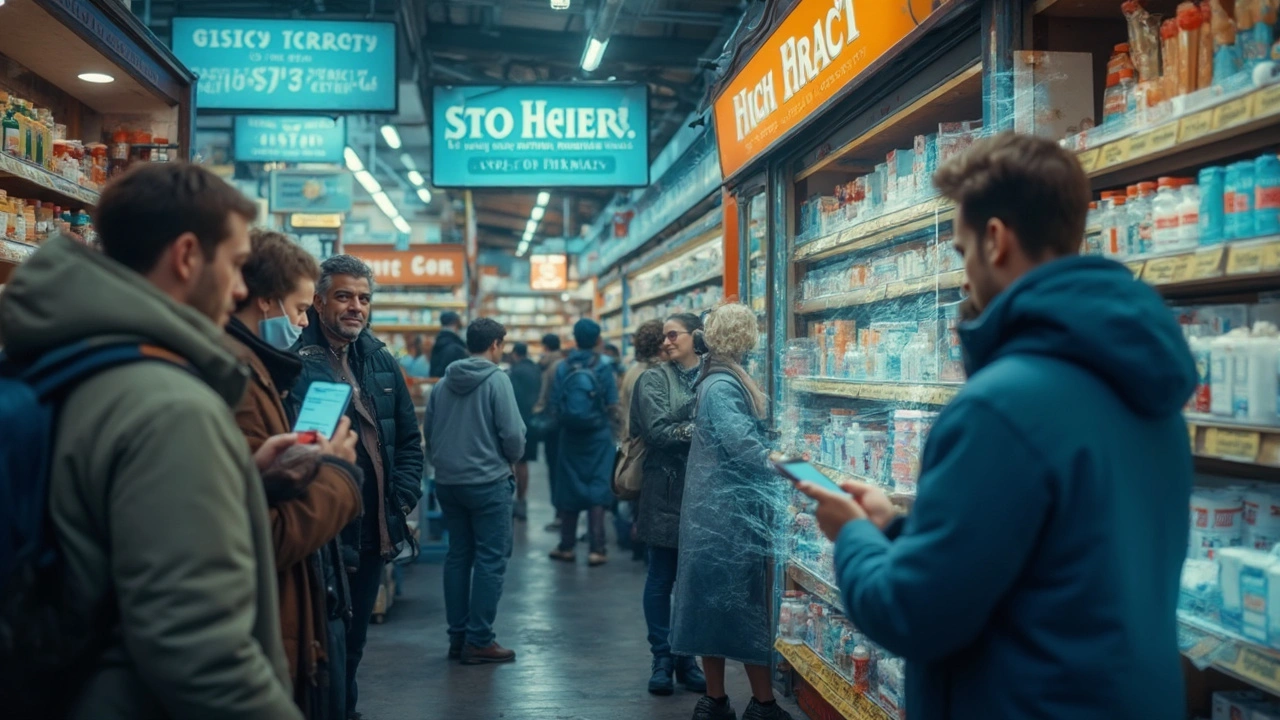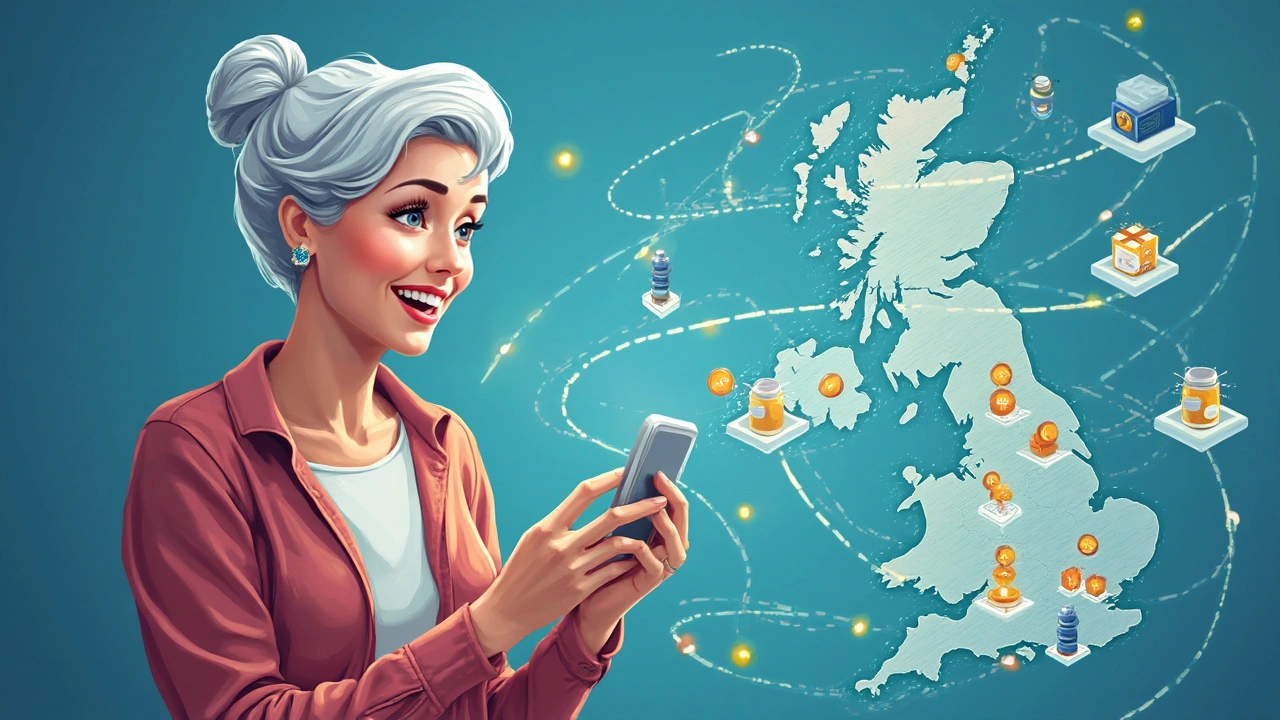The Growth of Digital Pharmacies: Disrupting the Prescription Game
Remember when getting a prescription meant an awkward wait in a fluorescent-lit pharmacy, hoping your number got called before your ice cream melted? Today, the scene is totally different. Digital pharmacy marketplaces have broken through territory once guarded by the neighborhood chemist, upending not just how we get our meds—but what we pay for them. From Amazon Pharmacy to Mark Cuban’s Cost Plus Drugs, these platforms are everywhere. According to a 2024 J.D. Power survey, nearly 40% of Americans have used an online pharmacy at least once, with many making it their go-to for routine meds. What makes these platforms so appealing? Convenience is one side of the pill: prescriptions come to your door, sometimes overnight. There’s also privacy—no chance of running into your chatty neighbor while picking up an embarrassing prescription.
But let’s talk numbers, because that’s where digital pharmacies pack the biggest punch. The traditional pharmacy world has always felt like a black box—prices are hard to pin down, insurance contracts are confusing, and discounts seem like lottery wins. Online pharmacies flip that on its head. You see real-time prices, get instant comparisons, and often pay far less for generics. Take Amazon Pharmacy, for example: a 2024 market report said its Prime Rx program knocked down the average price of common cholesterol and blood pressure drugs by about 23% compared to chain drugstores. Meanwhile, GoodRx and its digital cousins have made price transparency the standard, letting you compare rates across dozens of pharmacies.
Some digital pharmacies go the extra mile by running their own fulfillment centers, slashing middleman markups right out of the picture. Then there are platforms built on cash-pay models—no insurance games, just a flat fee. It’s no wonder the digital pharmacy market is expected to top $210 billion globally by 2028, doubling in less than five years. If you’re used to spiraling drug prices, it’s a breath of fresh air. One thing driving this growth is how easy it now is to get a prescription without ever stepping foot in a doctor’s office. Telemedicine boomed during the pandemic, and it’s here to stay. Online platforms now combine the doctor’s visit and the pharmacy, letting you consult with a provider and get your medication shipped the same day—all from your couch.
There’s a catch, though. Some localized medications, like certain compounding drugs, aren’t available online. For controlled substances or highly-specialized treatments, digital pharmacies can’t replace the physical pharmacy just yet. And despite the buzz, not every prescription will be cheaper. Sometimes local chains use insurance deals to undercut even the flashiest online discounts. But patients love having the choice. If you’re juggling multiple prescriptions or tired of surprise sticker shock, digital platforms are a game-changer.
Looking ahead, expect even more innovation. AI-driven prescription matching, same-day drone delivery, smart pill bottles that link with your phone—tech is rewriting the playbook on how we experience healthcare. But it’s really the shift in leverage that matters. For years, insurance companies and PBMs (pharmacy benefit managers) drove the bus. Now, consumers have the wheel—or at least the GPS.

The Impact on Prescription Pricing: Winners, Losers, and Sneaky Surprises
Why do the exact same pills cost $10 at one place and $150 at another? If you’ve ever scratched your head at that, digital pharmacy marketplaces have your back. By pulling together prices from hundreds of pharmacies in one spot—sometimes even including mail order and local drugstores—they crack open the price trap. It’s never been easier to shop around for the best deal. For instance, a 2023 Consumer Reports study found that filling a month’s supply of generic Lipitor could cost as little as $8 online, versus $90 at a walk-in pharmacy. Real-world savings like these aren’t rare outliers; for common generic drugs, most patients can save about 40% just by swapping to a digital-first platform.
But price comparison isn’t the only win. These platforms often toss in coupons, discount cards, or even their own memberships that stack up the savings. You’ll find real gems if you poke around. Of course, the big player everyone knows is GoodRx. But it’s not the only game in town anymore. There are tons of companies like GoodRx that have sprung up, offering alternative ways to slash costs, some specializing in generics, mail-order, or even specific disease categories. Certain platforms let you subscribe or bundle your monthly prescriptions to scoop up bulk discounts, much like a Netflix for meds.
Here’s a tip: prices at traditional pharmacies sometimes change weekly, especially if your insurance kicks you between different preferred networks. Digital marketplaces tend to hold steadier—what you see is usually what you get. Some also have handy mobile apps that ping you when a price drop is detected at a nearby partner pharmacy. You don’t have to play coupon detective anymore; let the app do the work.
That being said, savings isn’t universal. If you’re lucky enough to have solid insurance with good copays, you may not always beat your current price. Insurance exceptions matter—a lot. Some insurance drug formularies only allow prescriptions to be filled at in-network providers or through their preferred mail-order services. When shopping online, always double-check if your insurance will reimburse or accept the purchase. In some cases, you may be paying out-of-pocket, so balance those discounts with what your insurer covers.
For people without insurance, the benefits pop even more. Uninsured Americans—still nearly 8% of the country in 2024—face notoriously high walk-up pharmacy prices. Digital pharmacies, with their cash-pay focus, give uninsured shoppers a fighting chance. Mark Cuban’s Cost Plus Drugs, for example, has a strict markup cap of 15%, transparency about their own costs, and low flat shipping. This is making necessary medication accessible again for many who’d otherwise skip doses. If you’re on a steady monthly regimen or have chronic meds, check to see if a digital membership or automated refill service saves you extra.
Most digital pharmacies also pack in educational extras—like medication reminders, easy-to-read label explanations, and patient support chat. Little stuff, sure, but for anyone prone to missing a refill or dosing mistake, these features are worth their weight in Ibuprofen. It’s not just about cutting costs, it’s about making the whole process less stressful.
Still, buyers beware: the digital world isn’t totally risk-free. The FDA has a ‘BeSafeRx’ program to help spot shady online pharmacies, which have been known to peddle fake or expired drugs. Stick to certified, well-reviewed providers. Double-check site security before sending any personal info or insurance details. And if a price looks too good to be true, Google the pharmacy before you buy. The best companies are transparent about their sourcing and have clear, accessible customer service—don’t be shy about reaching out with questions.
If you’re willing to be flexible—maybe you’re okay with a generic over a brand—digital pharmacies reward the smart shopper. It’s easier to see every option on your screen than by calling pharmacies one by one. But, for some niche or breakthrough drugs, or if you’re using specialty insurance, the brick-and-mortar route can still win out. It’s all about tailoring your approach.

Tips, Pitfalls, and the Future: Making Digital Pharmacies Work for You
So, ready to try a digital pharmacy? Here’s what you need to know before you tap “checkout.” First, have your prescription details handy—doctor info, medication name, dosage, and insurance cards (if using insurance). Most online pharmacies make the setup painless, letting you upload a photo or have your doctor e-prescribe directly.
Don’t forget to compare across platforms. Use at least two—different pharmacies sometimes have wildly different prices. Use the price comparison features and check for hidden membership fees, mandatory subscriptions, or surprise shipping charges. If you find a price that looks suspiciously low, check that the company is either NABP (National Association of Boards of Pharmacy) accredited or listed on the FDA’s safe online pharmacy list.
Some must-ask questions before you buy:
- Is there a pharmacist available for consultation?
- Are medications sourced directly from FDA-approved manufacturers?
- What is the return or cancellation policy?
- How soon will my prescription ship after being approved?
Worried about missed doses? Many online pharmacies will ping you with refill reminders, and some even sync with your calendar or Apple Health. Consider setting those up for regularly used medications. If you’re a caregiver, digital platforms make it much easier to coordinate meds for relatives or kids, bundling their prescriptions into the same shipment.
Shipping times are usually fast, but some rural locations or special meds can cause delays—plan ahead if you’re about to run out. Also, check whether your doctor needs to send a new prescription annually, as many digital pharmacies don’t do automatic refills past a year.
There’s a side benefit most people forget: digital records. Prescription history is at your fingertips, helpful for healthcare appointments or emergencies. Many platforms let you download past order summaries or chat with a pharmacist straight from your phone if you hit a snag.
The digital pharmacy landscape will keep changing. The next wave? Personalized medicine: AI-driven systems that help you find drug alternatives based on genetics or save you money by swapping to a cheaper therapeutic equivalent. Walmart and Amazon are exploring partnerships with telemedicine giants to tie online doctor visits directly into the medication supply chain. If drone delivery or prescription vending machines sound sci-fi, remember DoorDash is already piloting same-day med drops in a dozen cities.
Here’s a quick table showing the top five reasons people switch to online pharmacies according to a 2024 industry survey:
| Reason | Percentage of Users |
|---|---|
| Lower Prices | 57% |
| Convenience/Delivery | 28% |
| Privacy | 7% |
| Better Medication Management | 5% |
| Access to Hard-to-Find Meds | 3% |
Even if only one of these reasons speaks to you, it’s probably worth at least checking prices online. For families, caregivers, or anyone dealing with chronic illness, these changes mean less driving, fewer headaches, more transparency, and—if you play it right—a much smaller bill. Next time your doctor hands you a prescription, why not see if the old pharmacy is really your best option?

Kristen Magnes
May 5, 2025 AT 12:38My grandma even started using it after I showed her the app. She says it's the first time she's ever felt like she could afford her meds.
Rachel M. Repass
May 6, 2025 AT 10:21Ravi Singhal
May 7, 2025 AT 00:18Ardith Franklin
May 8, 2025 AT 01:17Cameron Daffin
May 8, 2025 AT 15:58adam hector
May 9, 2025 AT 16:01Vinicha Yustisie Rani
May 10, 2025 AT 22:03Bobby Marshall
May 11, 2025 AT 11:21Donna Hinkson
May 11, 2025 AT 11:31Victoria Arnett
May 12, 2025 AT 11:57Carlo Sprouse
May 13, 2025 AT 12:38Arthur Coles
May 14, 2025 AT 01:09